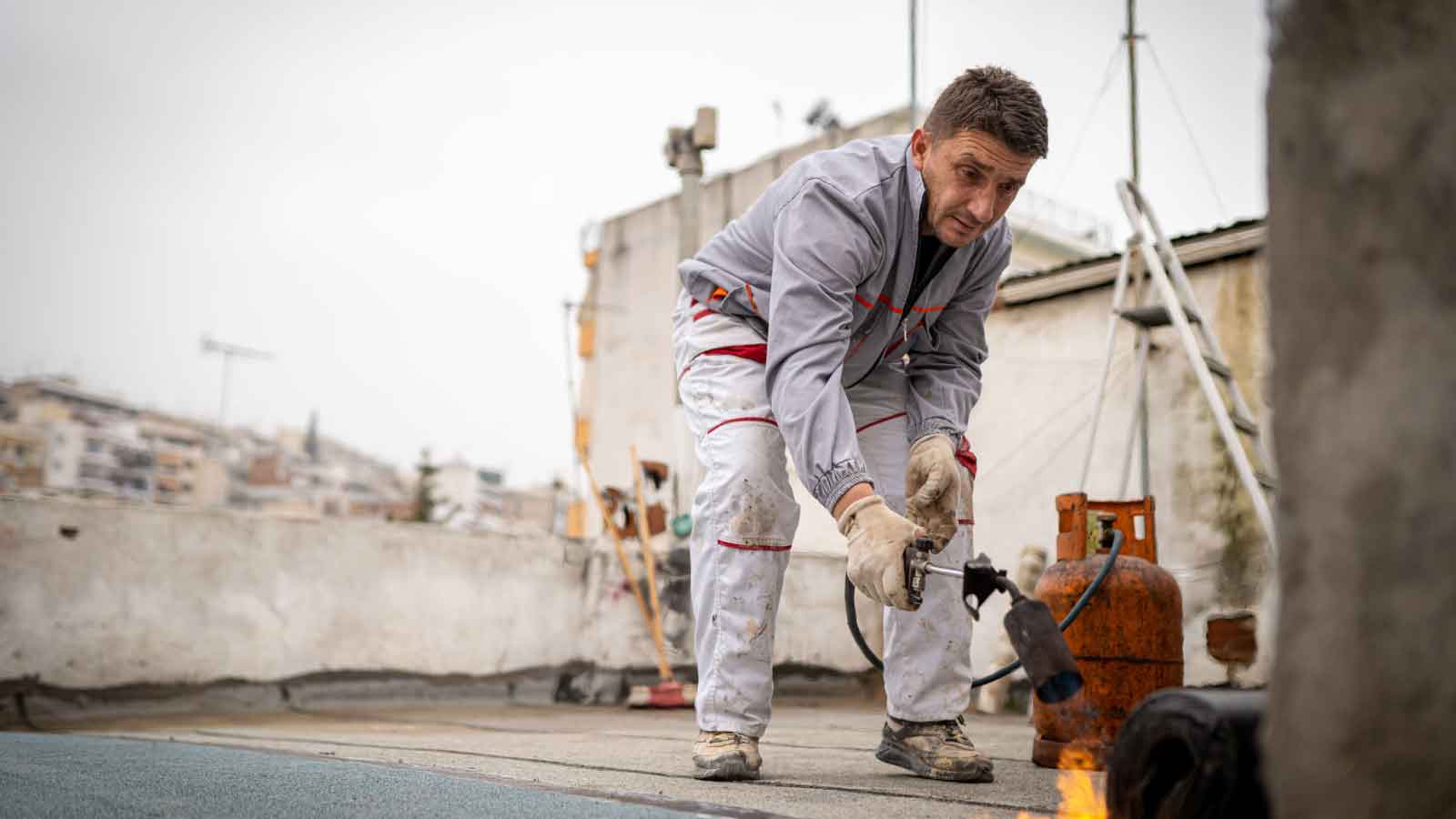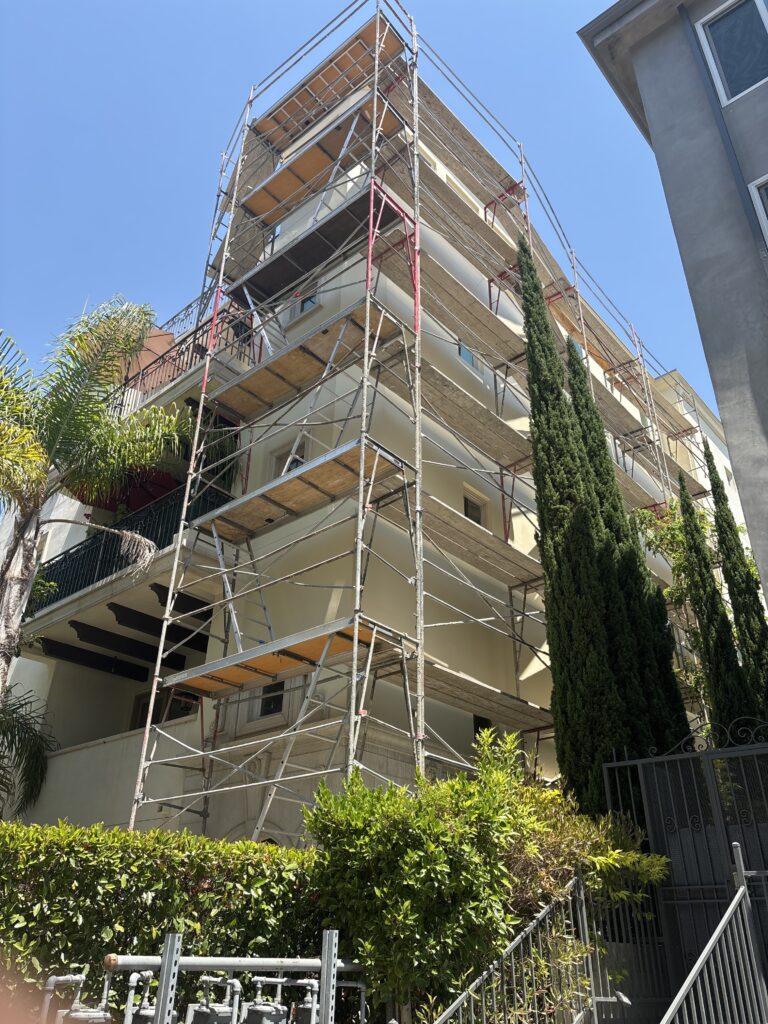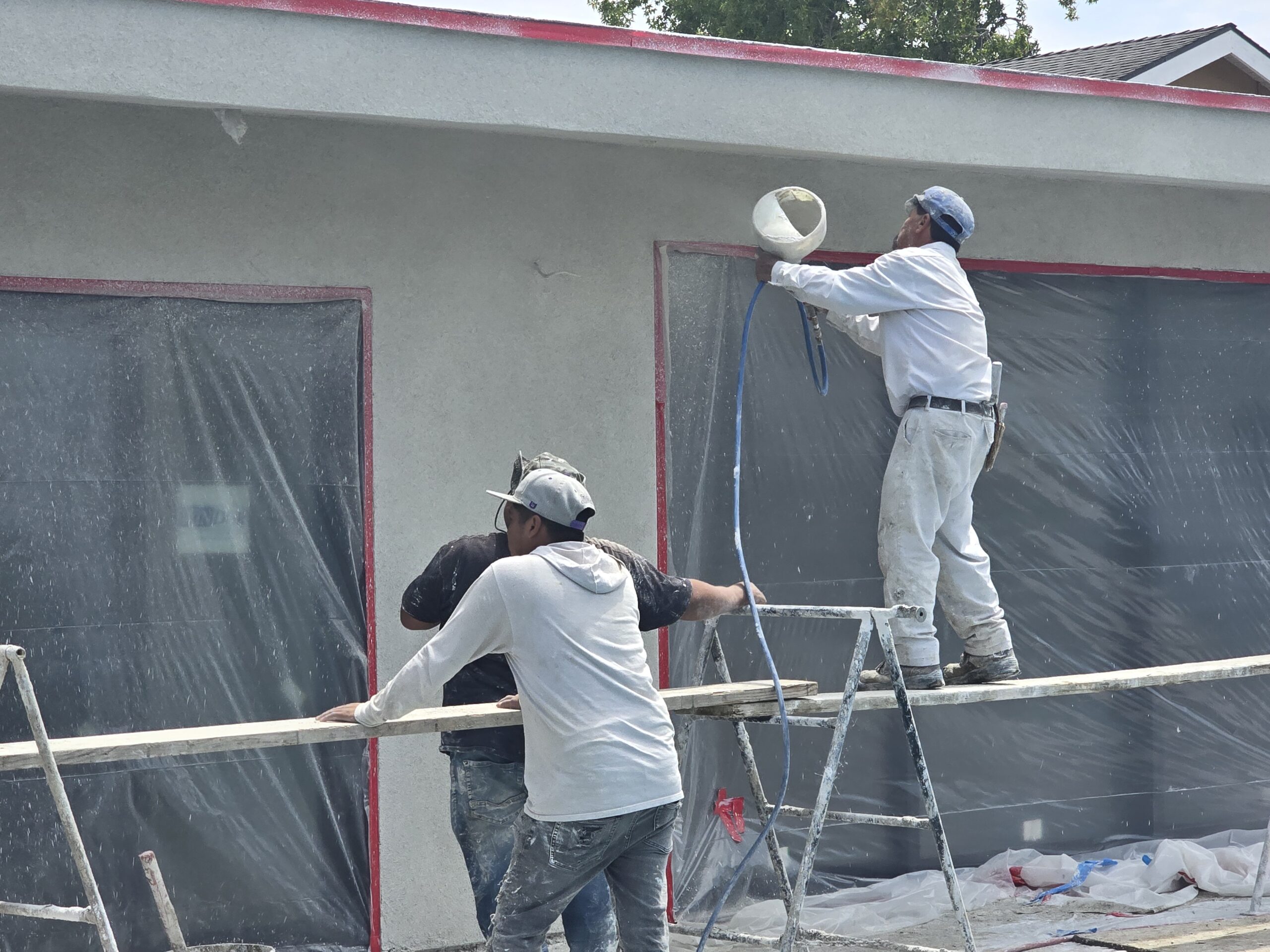Bathroom Waterproofing in Los Angeles
IICRC Certified
California State Contractor License
Micro Certified
BBB Accredited
Bathroom water damage represents the most common and costly moisture problem in Los Angeles homes. At Absolute Maintenance & Consulting, we’ve spent 37 years preventing and repairing bathroom water intrusion using advanced waterproofing membranes, proper drainage design, and moisture barrier systems. Our IICRC-certified specialists understand that effective complete waterproofing requires both surface protection and substrate moisture management, preventing leaks while controlling humidity that causes hidden mold growth.


Los Angeles Bathroom Moisture Challenges
Los Angeles bathrooms face unique stress from hard water, aging plumbing infrastructure, and construction practices that often shortcut proper waterproofing protocols. Many homes built before modern building codes lack shower pan liners, adequate slope for drainage, or proper vapor barriers behind tile. The region’s hard water accelerates grout deterioration, creating pathways for moisture to reach wallboard and framing. Combination tub-showers in older homes frequently develop leaks at valve stems, overflow assemblies, and drain connections that go unnoticed until subfloor damage becomes extensive.
Multi-story homes and condominiums present elevated risk—second-floor bathroom leaks cause ceiling damage to rooms below, requiring extensive reconstruction. California’s stringent habitability laws make landlords liable for water damage from deferred bathroom maintenance. We regularly remediate disasters from neglected caulking, failed shower pans, and leaking toilets that have rotted subfloors and compromised structural joists.
The prevalence of master bathrooms with large walk-in showers, freestanding tubs, and spa features increases waterproofing complexity. These luxurious installations require meticulous waterproofing during construction—any shortcuts result in expensive tear-out and reconstruction when leaks inevitably develop. Our forensic leak detection has revealed that 80% of bathroom water damage stems from improper initial waterproofing rather than product failure.
Professional Bathroom Waterproofing Methods
Liquid-Applied Waterproofing Membranes
Modern liquid membranes like Redgard, Hydroban, and Kerdi-Fix provide seamless waterproofing for shower walls, floors, and tub surrounds. These polymer-modified systems brush or roll onto clean substrate surfaces, curing into elastic membranes that accommodate building movement without cracking. We apply multiple coats to specified mil thickness, paying special attention to corners, penetrations, and transitions where most leaks originate.
Liquid membranes integrate with reinforcing fabric at seams and corners, creating waterproof terminations that prevent water from migrating behind the system. Unlike outdated tar paper methods, liquid membranes bond directly to cement board, plywood, or concrete substrates, eliminating gaps where water could travel. The systems accommodate direct tile bonding, eliminating the mortar bed step required by older hot-mop methods. Application is less invasive than sheet membranes, making them ideal for remodels where preserving existing structure is critical.
Sheet Membrane Systems (Schluter-Kerdi, Laticrete)
Sheet membranes like Schluter-Kerdi provide foolproof waterproofing when properly installed. These polyethylene-based fleece membranes adhere to substrates using modified thinset, with overlapping seams and pre-formed corners creating a complete waterproof envelope. The fleece layer provides mechanical bonding for tile installation, eliminating multiple steps and ensuring waterproofing integrity isn’t compromised during tile setting.
We use Kerdi-Board, a waterproof substrate, for niches, benches, and curbs—eliminating wood framing that rots when moisture inevitably penetrates tile. The system includes pre-sloped shower trays, pipe seals, mixing valve assemblies, and termination strips creating a complete manufacturer-warrantied waterproofing assembly. While more expensive than liquid membranes, sheet systems offer superior long-term reliability for luxury bathrooms where reconstruction costs are prohibitive.
Traditional Hot-Mop PVC Pan Liners
For shower pan applications where building officials or specifications require physical pan liners, hot-mopped PVC or CPE membranes provide time-tested reliability. We install 40-mil sheet membranes over properly sloped mortar beds, heat-welding seams and forming water-tight corners extending 9 inches up walls. The pan creates a fail-safe barrier—even if tile and grout fail, water is contained and directed to the drain.
This method requires skilled tradesmen understanding proper pre-slope preparation, clamping drain assemblies correctly, and protecting the membrane during subsequent mortar bed and tile installation. While labor-intensive, hot-mop pans remain the gold standard for commercial applications and jurisdictions requiring physical waterproof barriers independent of surface tile assemblies. Our installers have decades of experience with this proven technology.

Ready to experience the Absolute Maintenance difference?
Why Choose Absolute Maintenance for Bathroom Waterproofing
Bathroom waterproofing is our daily focus, not an occasional side job. Our technicians receive manufacturer training on Schluter, Laticrete, and Custom Building Products systems, ensuring installations meet warranty requirements. We’ve waterproofed thousands of Los Angeles bathrooms from budget tub surrounds to $100,000 master suite remodels—we understand what works and what shortcuts cause failures.
We don’t waterproof with paint-on sealers and hope for the best. Every installation includes proper substrate preparation—ensuring surfaces are clean, structurally sound, and free from contaminants that prevent membrane adhesion. We test substrates for moisture content, verify proper slopes using digital levels, and conduct flood testing before tiling. These steps add minor time but prevent the nightmare of discovering leaks after expensive tile and fixtures are installed.
Our 37 years in business means we’ve seen every bathroom waterproofing failure mode and refined our processes to prevent them. We insist on proper backer board (not regular drywall painted with waterproof coating), proper shower pan preslope, adequate drain clearance, and waterproofing all penetrations before assembly. Many failures occur at these overlooked transition points—where different materials and planes meet.
We coordinate with tile setters, plumbers, and general contractors to ensure waterproofing happens at the correct construction phase. Waterproofing applied after plumbing but before tile installation prevents rework and ensures proper integration. Our documentation includes photos of waterproofed surfaces before tiling—protecting all parties if future issues arise and providing reassurance that unseen critical work was completed correctly.
Common Signs You Need Bathroom Waterproofing
- Water stains on ceilings below bathrooms
- Loose or hollow-sounding tiles in shower or tub areas
- Musty odors indicating hidden mold growth
- Grout cracking or missing in shower floors or walls
- Soft or spongy flooring near tubs or showers
- Visible mold on caulk or grout lines
- Water damage on walls adjacent to showers
- Continuous dampness on walls or floors after shower use
- Deteriorating drywall or peeling paint in bathroom areas
Ready to experience the Absolute Maintenance difference?
Bathroom Waterproofing Process
1. Existing Condition Assessment We inspect existing bathrooms for signs of water damage, test subfloor moisture content, and evaluate structural integrity. Infrared cameras detect hidden moisture behind walls and under floors. This assessment determines if simple membrane addition suffices or if substrate replacement is necessary before waterproofing.
2. Demolition & Substrate Preparation Damaged materials are removed to sound structure. Subfloors are evaluated and replaced if compromised. We install proper cement board or waterproof substrates, ensuring secure fastening and appropriate joist spacing. All surfaces are cleaned, primed if required, and verified flat within tolerance before waterproofing application.
3. Waterproofing System Installation Chosen waterproofing systems are installed per manufacturer specifications. Liquid membranes receive multiple coats with fabric reinforcement at corners and transitions. Sheet membranes overlap with proper adhesive coverage and no voids. Shower pans are sloped correctly, drain assemblies clamped to manufacturer torque specifications, and all penetrations sealed with compatible materials.
4. Flood Testing & Verification Before tiling or covering waterproofing, we conduct flood tests filling shower pans to dam height and monitoring for leaks. Wall areas receive spray testing to verify no breaches exist. Any issues are corrected before proceeding—discovering waterproofing failures before tiling prevents expensive rework.
5. Tile Installation or Handoff If we’re providing complete remodeling, tile installation proceeds using proper thinset and techniques that don’t compromise waterproofing. If waterproofing only, we provide detailed handoff documentation to tile installers specifying compatible thinsets, grouting requirements, and areas requiring special attention.
6. Final Sealing & Warranty Documentation All penetrations, transitions, and changes in plane receive appropriate sealants. Movement joints are caulked with flexible sealants rather than grouted. We provide warranty documentation, maintenance guidelines, and specifications for materials used—ensuring future work doesn’t void warranties.
Related Waterproofing Services
Protect your entire home from moisture intrusion with our comprehensive waterproofing services:
- Waterproofing Services
- Kitchen Waterproofing
- Balcony Waterproofing
- Stucco Waterproofing
- Wall Waterproofing
- Window Waterproofing
- Roof Waterproofing
- Foundation Waterproofing
- Basement Waterproofing
- Bathroom Waterproofing
For bathroom waterproofing consultations or emergency leak repairs, contact our Los Angeles team at (310) 678-4345. We provide detailed assessments, competitive proposals, and fast-track scheduling for urgent water damage situations.
Bathroom Waterproofing FAQs
What does it cost to waterproof a bathroom in Los Angeles?
Bathroom waterproofing costs in Los Angeles typically range from $500 to $1,000 for an average-sized bathroom, though prices vary based on several factors. For shower waterproofing specifically, professional installation costs between $400 and $4,250, while larger or complex bathroom projects can reach $4,000 or more.
Los Angeles bathroom waterproofing pricing factors include:
- Bathroom size: Larger bathrooms require more materials and labor
- Location within home: Second-story bathrooms need extensive floor waterproofing
- Project complexity: Custom layouts, multiple fixtures, or difficult access areas increase costs
- Material quality: Premium waterproofing membranes cost more but last longer
- Current market rates: LA’s competitive construction market affects contractor availability and pricing
In Los Angeles County, labor costs and demand for waterproofing contractors can influence final prices. For accurate estimates, request quotes from at least three licensed California contractors who are familiar with LA building codes. Many Los Angeles waterproofing companies offer free inspections and detailed cost breakdowns.
Can you repair bathroom waterproofing in Los Angeles?
Yes, bathroom waterproofing repair is possible in Los Angeles, and many waterproofing specialists like Absolute Maintenance & Consulting can fix leaking showers without removing tiles, saving hundreds or thousands of dollars. Professional waterproofing repair services in LA typically involve removing damaged grout, injecting liquid sealant beneath tiles, and regrouting with epoxy or applying sealant over grout and tiles.
Common bathroom waterproofing repairs in Los Angeles include:
- Grout repair: Removing and replacing cracked or deteriorated grout to restore watertight seals
- Silicone resealing: Replacing failed caulking around tubs, showers, and fixtures
- Membrane patching: Repairing small areas of damaged waterproofing membrane
- Injection waterproofing: Using specialized products to seal leaks without tile removal
- Epoxy grout application: Installing water-resistant grout for long-term protection
For Los Angeles bathrooms, hiring licensed waterproofing professionals ensures repairs meet California building codes and come with proper warranties. While minor caulking work can be DIY, significant waterproofing failures require professional assessment. Many LA waterproofing companies offer free leak detection and can determine whether repair or full replacement is necessary.
When to repair vs. replace waterproofing:
- Minor grout damage or small leaks → Repair
- Widespread membrane failure or structural damage → Replace
- Persistent mold or extensive water damage → Professional evaluation needed
How is bathroom waterproofing done in Los Angeles?
Professional waterproofing involves cleaning and preparing surfaces, applying primer, then installing waterproofing membranes on floors and walls with special attention to corners and plumbing areas. After multiple coats cure, contractors conduct 24-hour water testing before tile installation.
LA requirements: Licensed California contractors, LA County building code compliance, proper shower wall heights, second-story floor waterproofing, and possible permit inspections. Process takes 2-3 days minimum before tiling.
Schedule Your Waterproofing Consultation Now.
Why Property Owners Choose Us
Call: (310) 678-4345Service Area
We serve:
Beverly Hills, Brentwood, Santa Monica, West Hollywood, Bel Air, Pacific Palisades, Sherman Oaks, Pasadena, Studio City, Downtown LA, Huntington Beach, Newport Beach, and more.
